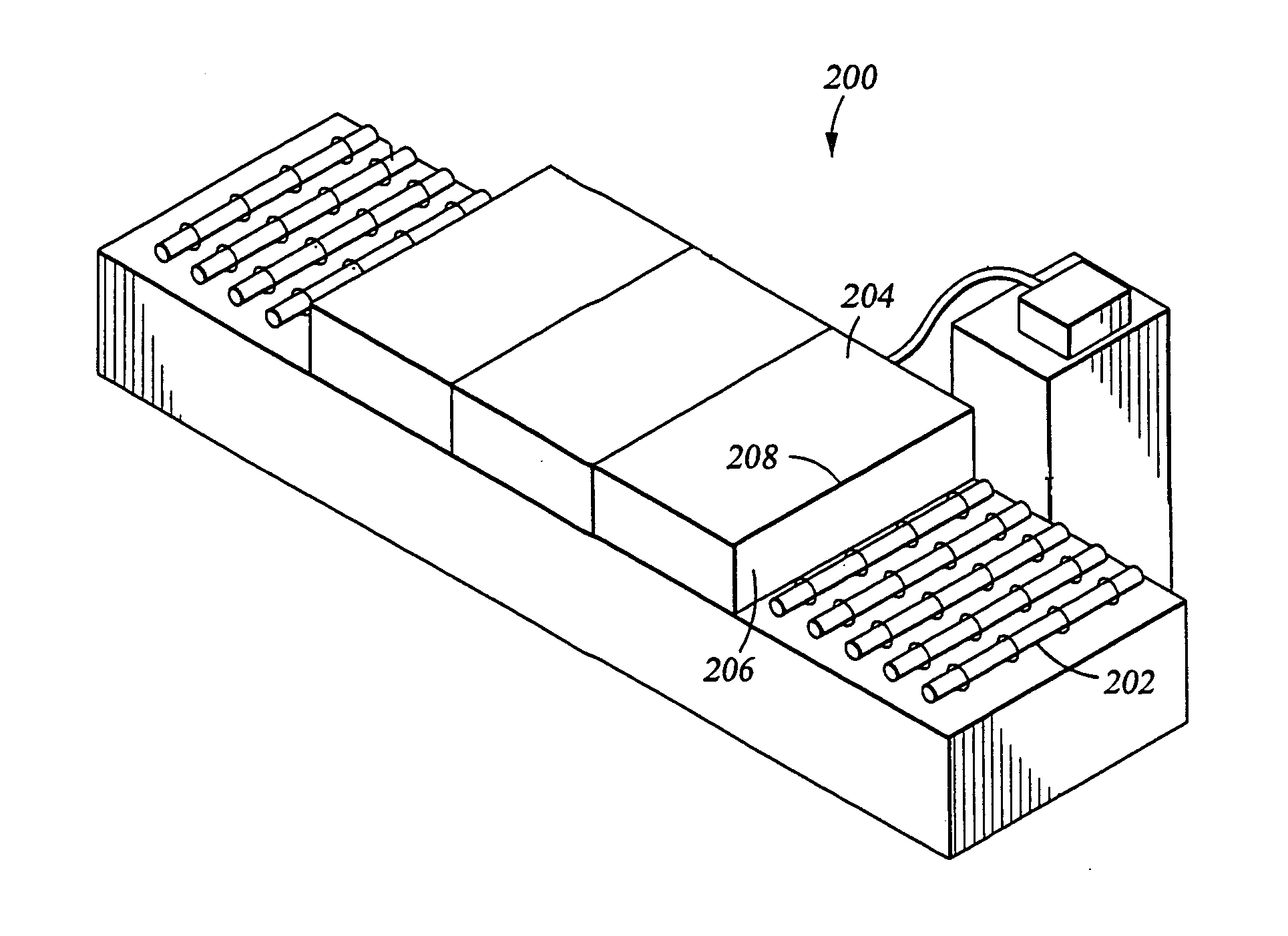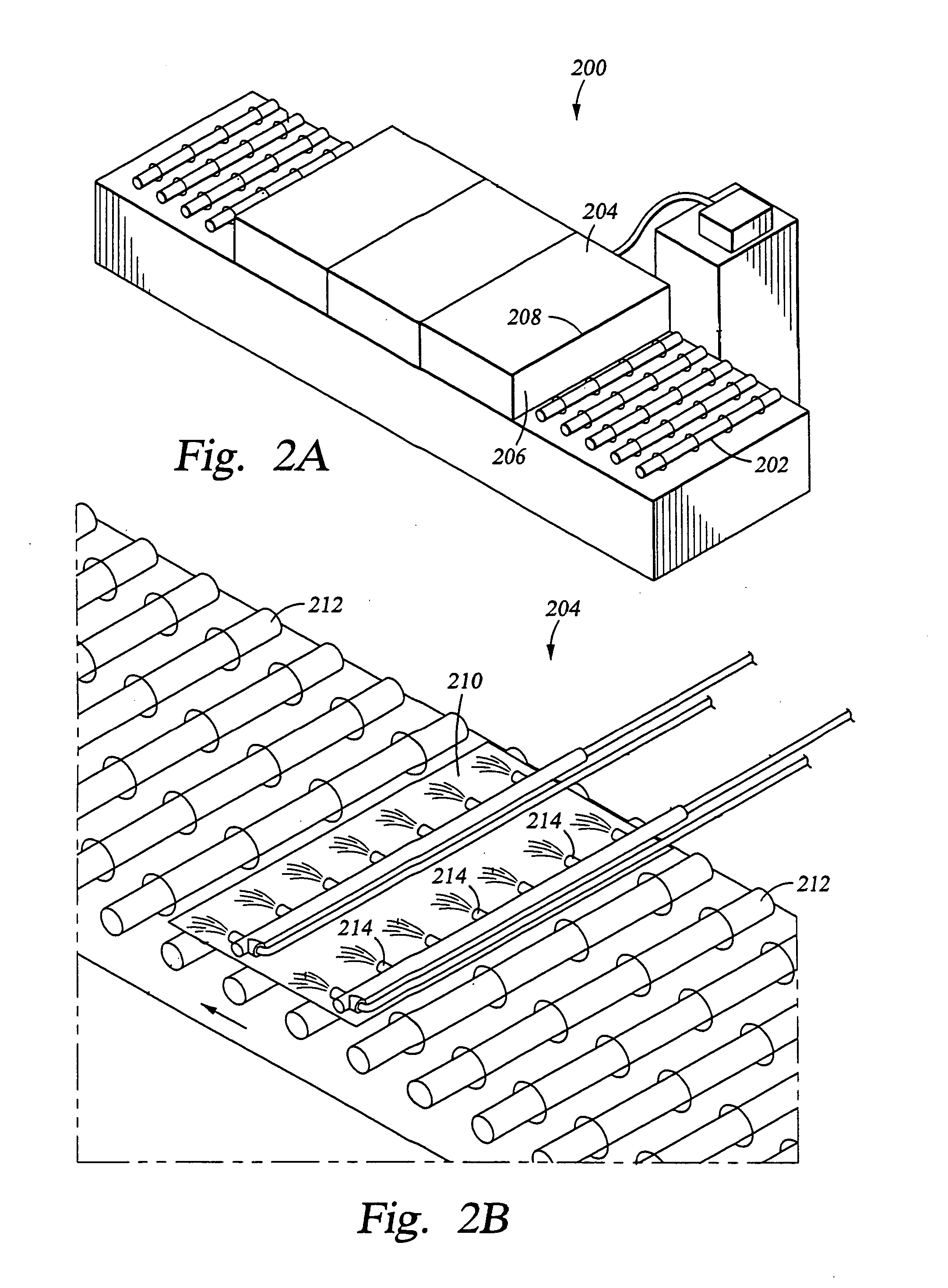Stripping and cleaning of organic-containing materials from electronic device substrate surfaces
a technology of electronic devices and substrate surfaces, which is applied in the direction of cleaning using liquids, inorganic non-surface active detergent compositions, instruments, etc., can solve the problems of unacceptably slow removal rate of organic materials and high corrosion rate of metals present on the substrate surface, and achieve the effect of reducing the odor of solvents
- Summary
- Abstract
- Description
- Claims
- Application Information
AI Technical Summary
Benefits of technology
Problems solved by technology
Method used
Image
Examples
example one
Removal of Photoresist from a Substrate Surface Using Ozonated Pure Propionic Acid
[0075] A layer of a deep ultra-violet (DUV) photoresist which is sensitive to 248 nm radiation (UV 6, available from Shipley, Marlborough, MA) was applied to a thickness of approximately 10,000 Å onto the surface of a single-crystal silicon wafer. The photoresist was applied using a spin-on process, then baked for 30 minutes at 95° C. Ozonated propionic acid (100% propionic acid) containing at least 300 ppm (or mg / L) of ozone was sprayed onto the surface of the photoresist-coated substrate at room temperature (25° C.), using a dispensing system such as that shown in FIG. 2B. The ozonated propionic acid was allowed to react with the photoresist for a period of 30, 60, or 120 seconds, then rinsed off the substrate surface by spraying with deionized water for a period of 10 to 20 seconds.
[0076] Table Three, below, shows the amount of photoresist which was removed from each substrate. Within the accuracy...
example two
Corrosivity of Ozonated Propionic Acid on Aluminum
[0078] A layer of aluminum was deposited to a thickness of approximately 10,000 Å onto the surface of a single-crystal silicon wafer using a physical vapor deposition (PVD) process of the kind known in the art. To test the corrosivity of ozonated propionic acid on aluminum, ozonated propionic acid (100% propionic acid) containing at least 300 ppm (or mg / L) of ozone was sprayed onto the surface of the aluminum-coated substrate at room temperature (25° C.), using a dispensing system such as that shown in FIG. 2B. The ozonated propionic acid was allowed to react with the aluminum for a period of 30, 60, or 120 seconds, then rinsed off the substrate surface by spraying with deionized water for a period of 10 to 20 seconds.
[0079] Table Four, below, shows the thickness of the aluminum layer before and after treatment.
TABLE FOURCorrosivity of Ozonated Propionic Acid Stripping Solutionon AluminumPre-TreatmentPost-TreatmentAl ThicknessTre...
example three
Corrosivity of Ozonated Propionic Acid on Titanium Nitride
[0081] A layer of titanium nitride was deposited to a thickness of 450 Å onto the surface of a single-crystal silicon wafer using a physical vapor deposition (PVD) process. In order to test the corrosivity of ozonated propionic acid on titanium nitride, ozonated propionic acid (100% propionic acid) containing at least 300 ppm (or mg / L) of ozone was sprayed onto the surface of the TiN-coated substrate at room temperature (25° C.), using a dispensing system such as that shown in FIG. 2B. The ozonated propionic acid was allowed to react with the titanium nitride surface for a period of 30, 60, or 120 seconds, then rinsed off the substrate surface by spraying with deionized water for a period of 10 to 20 seconds.
[0082] Table Five, below, shows the thickness of the titanium nitride layer before and after treatment.
TABLE FIVECorrosivity of Ozonated Propionic Acid Cleaning Solutionon Titanium NitridePre-TreatmentPost-TreatmentTi...
PUM
| Property | Measurement | Unit |
|---|---|---|
| volume % | aaaaa | aaaaa |
| vapor pressure | aaaaa | aaaaa |
| temperature | aaaaa | aaaaa |
Abstract
Description
Claims
Application Information
 Login to View More
Login to View More - R&D
- Intellectual Property
- Life Sciences
- Materials
- Tech Scout
- Unparalleled Data Quality
- Higher Quality Content
- 60% Fewer Hallucinations
Browse by: Latest US Patents, China's latest patents, Technical Efficacy Thesaurus, Application Domain, Technology Topic, Popular Technical Reports.
© 2025 PatSnap. All rights reserved.Legal|Privacy policy|Modern Slavery Act Transparency Statement|Sitemap|About US| Contact US: help@patsnap.com



